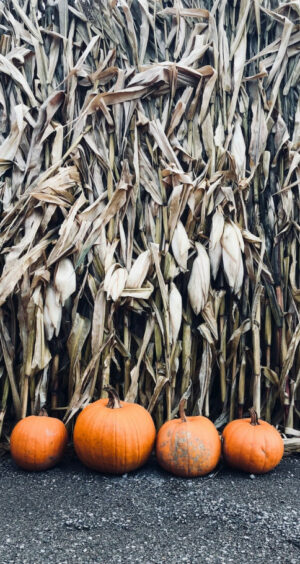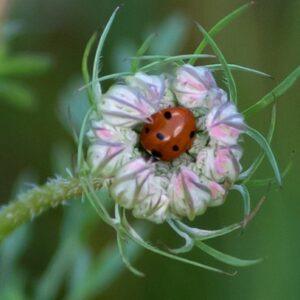What Are Companion Plants?
Companion plants are in league with each other, synergistically. They make each other better, bigger, stronger and more prolific. They can provide nutrients for each other and/or provide protection from marauding insects. A relationship like this can be a total 50/50 symbiosis, or completely one-sided. When we say “Companion Plants,” we generally mean good companions. There are bad companions, too. Knowing who to keep apart is as important as knowing who to put together.
Is This The Same Thing as a Guild?
No. But there is a connection. Guilds are a central design element in permaculture. The combinations of plants in guilds are good companions. But a grouping of companion plants isn’t necessarily a guild…although it could be. Painted in broad strokes, a guild is a permanent plant community, made up of mostly perennials. Permanent. Culture. While companion plants are simply any plants that work well together. Annuals, maybe, or a combination. But this is fluid. The Three Sisters is a simple guild and all three plants – corn, beans & squash, basically – are annuals. You can create guilds out of annuals, if you want to. It’s just words, really. Plants don’t care about words.
What About Nurse Plants?
While nurse plants are definitely companion plants, they fulfill a somewhat different function. Basically, a nurse plant will enable the growth of seedlings and young plants, protecting them from harsh conditions until they get big enough to fend for themselves. In a garden situation, nurse plants are frequently killed after their charge has grown up enough. But not always.
There is an overlap between nurse plants and companion plants, but they are not the same thing. Again. Words.
Companion Planting Benefits
Planting the right companions for your fruits & veggies has many benefits. And every plant has her own specialty. Some attract the predatory wasps and other beneficial insects, who eat pests. Some improve soil health, by drawing up particular nutrients and minerals. These nutrients then become available to the vegetables. Some encourage the proliferation of beneficial soil organisms. And some simply disguise the scent of luscious fruits with their own strong scent. This disorients insects. Imagine, from an insect’s perspective, the smells of lavender, marigold and peppermint, for instance, overshadowing the scent of ripening watermelons.
simply disguise the scent of luscious fruits with their own strong scent. This disorients insects. Imagine, from an insect’s perspective, the smells of lavender, marigold and peppermint, for instance, overshadowing the scent of ripening watermelons.
Ideally, you would employ many different plants, working on many different levels. Biodiversity is where it’s at.
Guide to Companion Planting
Be strategic, intentional, use common sense and pay attention to what works and what doesn’t. You don’t have to go nuts with it…unless you really want to! You don’t need to have a different variety of basil plant for every tomato plant and eggplant, for instance. One or two located strategically around the tomatoes and eggplants should be enough. And the spaces beneath and around the tomatoes and/or eggplants don’t have to be packed super tight with garlic. Less is more. But then again, more is more, too. It might make excellent sense to have a closely planted checkerboard of tomatoes, eggplants, basil and garlic, along with oregano, chives, parsley & nasturtium. It just depends how much you like to cook Italian.
A Few Basics – Scratching the Surface

Echinacea and Queen Anne’s Lace are both beautiful, medicinal and very attractive to beneficial predatory insects. Be sure to include them everywhere you have room.
Corn benefits from peas, beans, pumpkin & squash, obviously. The Three Sisters. But they also like melons, cucumbers, potatoes, marigolds, sunflowers & Jerusalem artichoke.
Stinging nettles are good everywhere, besides being an excellent wild food and incredible medicine, they are nutrient accumulators and make superb mulch. Their presence will also increase the oil content of most herbs.
 Nasturtium improves the flavor of tomatoes. Plus, aphids really like nasturtium, so they are lured away from the tomatoes, where predatory ground beetles lurk in the cool shade of the nasturtium vines. And if you have Echinacea and/or Queen Anne’s Lace nearby, too, they will act as beacons to predatory wasps and lady bugs, calling them in from all quarters. The more aphid-eaters, the merrier!
Nasturtium improves the flavor of tomatoes. Plus, aphids really like nasturtium, so they are lured away from the tomatoes, where predatory ground beetles lurk in the cool shade of the nasturtium vines. And if you have Echinacea and/or Queen Anne’s Lace nearby, too, they will act as beacons to predatory wasps and lady bugs, calling them in from all quarters. The more aphid-eaters, the merrier!
Thyme is a delicious culinary herb as well as a garden tonic. She attracts hoverflies, who eat aphids and keeps cabbage beetles away from the brassicas. She improves the flavor of strawberries, so having them together in the same bed will work wonders. Like the other Mediterranean herbs, she does not like soggy soil, though, so make sure she’s in a well drained area. These kinds of herbs, that like it a little drier, can, perhaps be planted among the retaining rocks of a raised bed. No reason it shouldn’t be beautiful as well as practical.
The trick is to use the right combination of book learning and dirt covered trial & error. And don’t be afraid to employ empathy & understanding in the quest to find the perfect place for each plant, where she will be the happiest and do the most good.
 Borage Companion Planting
Borage Companion Planting
Borage, like her family member Comfrey is a wonderful mulch plant that improves the soil and makes great compost. It also attracts pollinators. So plant it in strategic locations throughout the garden. You want to encourage a good pollinator flight pattern. It’s especially beneficial for tomatoes and the brassicas, as it deters both cabbage butterflies and tomato hornworms.
Making borage and comfrey hedges around the different parts of your garden would be wonderful.
Companion Plants for Beets, Carrots, Cabbage, Strawberries and Lettuce
Onion, chives and garlic, the Alliums, repel aphids, Japanese beetles and carrot rust fly. Additionally, Egyptian onions and chives are nutrient accumulators. They draw calcium and potassium into their leaves. They can be cut throughout the growing season and will keep growing back, making them a great chop and drop mulch. Cluster these guys together, in whatever combination you like the most, for the benefit of all.
Companion Planting Around Fruit Trees
Fruit trees hate bare soil. Luckily there are so many good companions for them, you have a lot to choose from. You can create whole, multi-storied gardens beneath their branches, everybody snuggled in nice and tight. Perennials, like comfrey and borage, will contribute their nutrient rich mulch forever. The flowers of Queen Anne’s Lace, wild carrots, attract predatory wasps. And, you might as well plant some domestic carrots there, as well. Keep it all in the family. Planting any and all of the Allium family will prevent aphids and fruit tree borers. The strong scent of lavender will confuse insects around apple and pear trees. Pollinators like bees and hummingbirds love lavender, too, so that stacks functions nicely.
Daffodils, leeks and elephant garlic around the drip line of the tree will stop grass from invading. Creeping thyme, peppermint, vining squashes and rhubarb prevent grass, too. They also keep the soil cool, which helps with water retention. Any of the clovers will also do this, plus fix nitrogen into the soil.
Plantain is a great mineral accumulator and green manure/mulch plant that also attracts beneficial insects.
And on and on it goes. Our friendly companions have turned themselves into a guild. Right in front of our eyes. But then, this is their nature, and should be ours.
Writing about this quickly becomes complicated, as there are multiple possible companion plant combinations…both good and bad companions. So I have put together a chart. Much easier to keep straight. It’s not exhaustive, but it’s pretty good. It will make your garden planning easier. Download a free copy of it here.
And, as always, please leave a comment. I love to hear from y’all!







Reading this insightful post on ‘Companion Plants: Helpful Harmony’ at Artful Homesteading felt like unlocking a secret garden of knowledge. You gracefully explore the concept of companion planting, where certain plants are strategically paired together to enhance growth, deter pests, and promote overall harmony in the garden. Your post resonated deeply with my own experience of creating a symbiotic ecosystem in my backyard by planting marigolds next to my tomatoes to ward off harmful insects. You not only offered practical tips but also celebrated the interconnectedness of nature and how working in harmony with it can yield abundant rewards and I really appreciate that.
Thank you so much for your beautiful comment. It makes me happy when the stuff I love the most resonates with somebody. I am a total biophile…and am proud to be!
This article beautifully explains the concept of companion plants and their benefits in gardening. It emphasizes the importance of strategic plant combinations, biodiversity, and understanding the needs of each plant. It also touches on guilds, nurse plants, and specific examples of companion plants for various crops. Overall, it’s a great guide for those interested in maximizing the potential of their garden through companion planting.
Thanks for stopping by and for your thoughtful comment.
Have a great day!
xxoo,
Anna
Wow, this article is very interesting and intriguing! I have heard about planting some plants next to each other to help against certain insects that can destroy a plant, but I didn’t realize that there were several plants helping each other in some kind of symbiosis. This is such more fascinating than using things like Roundup or other products which are bad for the environment. One could even wonder why not everybody with a vegetable garden or farmer works like this? Would it cost to much land you think?
I think the main reason people don’t understand these relationships is because of cultural conditioning. The Newtonian/Cartesian world view says the planet is dead and inert, animals have no feelings or souls, and plants…? Well, they’re even less alive than animals. This has been the dominant belief system of western civilization for a pretty long time now. Thankfully this perspective is finally being outgrown.
And no, it wouldn’t require more land. This can be done on either a small or large scale. Obviously, if you only have a tiny urban plot, a gigantic walnut tree may not be your first choice, but there are millions of smaller plants you can combine.